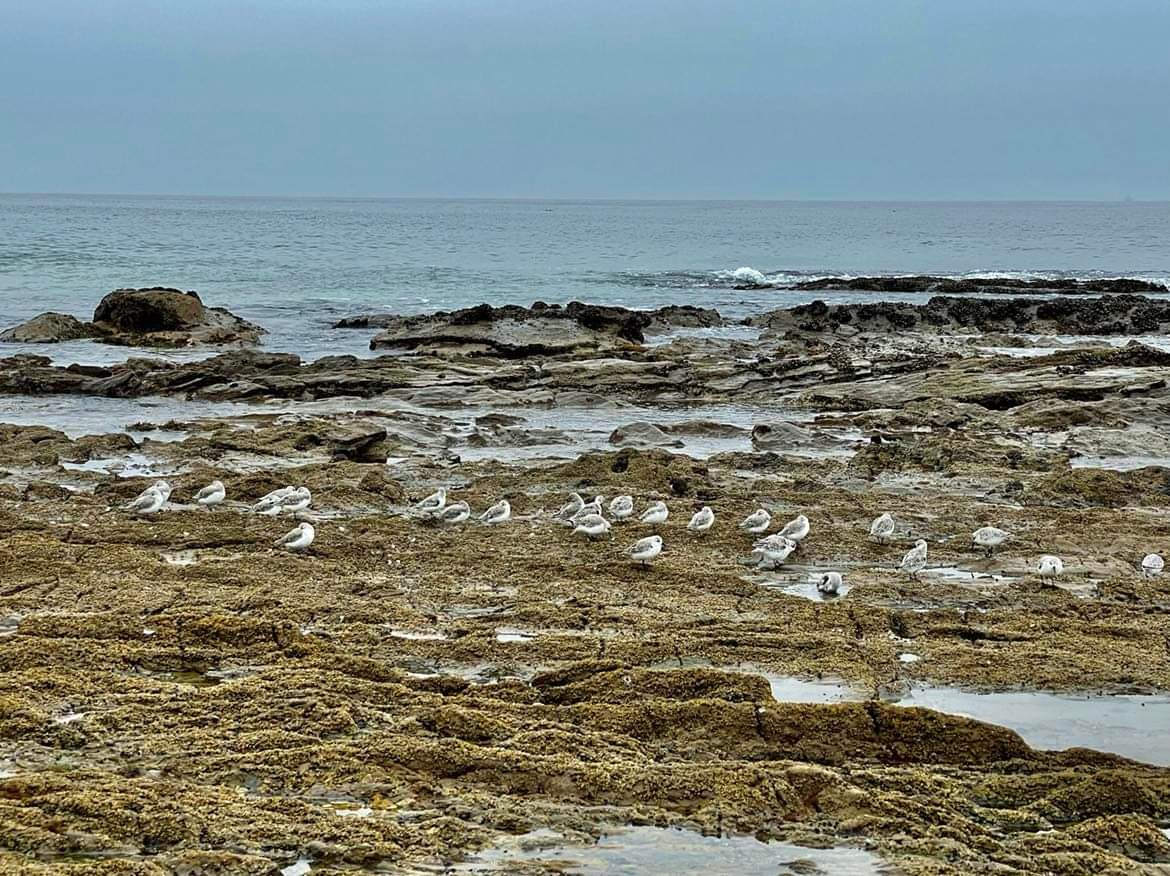
Sea change
November 8, 2021
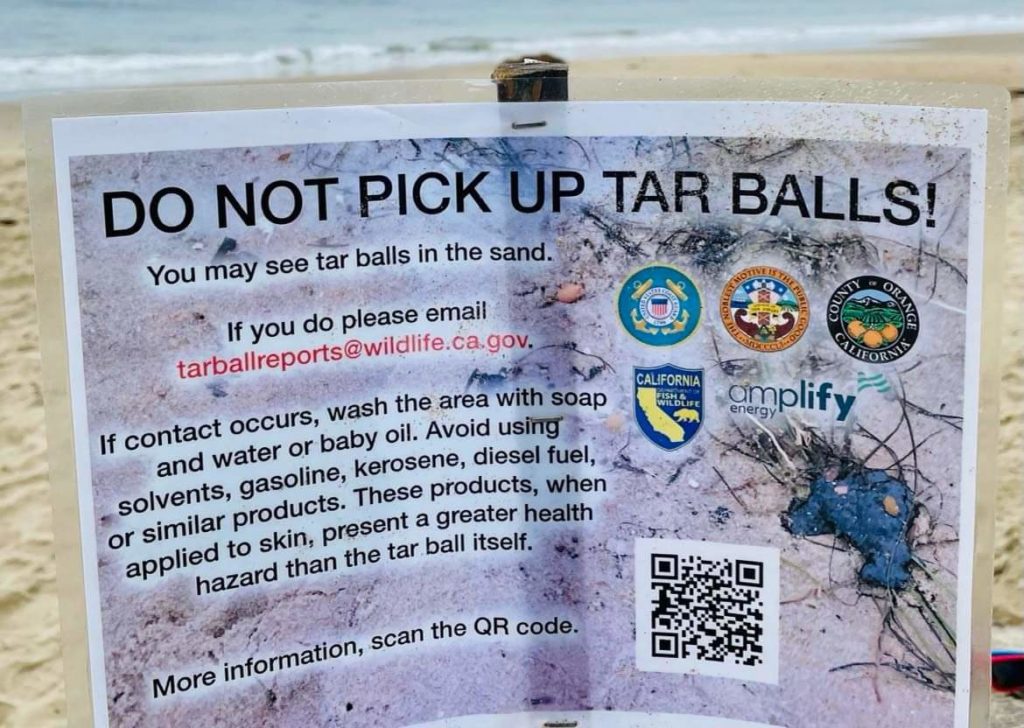
Until I read John Steinbeck’s Sea of Cortez recently, I’d always thought that tidepools were populated and depopulated with the tides. When the tides rolled in, so did sea life. When the tides went back out, sea life followed. I guess I’d thought of those tidepools as the bar and nightclub scene for marine animals. But Steinbeck taught me that tidepools are permanently occupied by the marine life there, and have adapted to the severe changes to their environment that occur daily as a result of high and low tides. Sort of like being subjected to hurricanes, tornadoes and earthquakes twice a day every day. Pretty resilient marine life if you ask me.
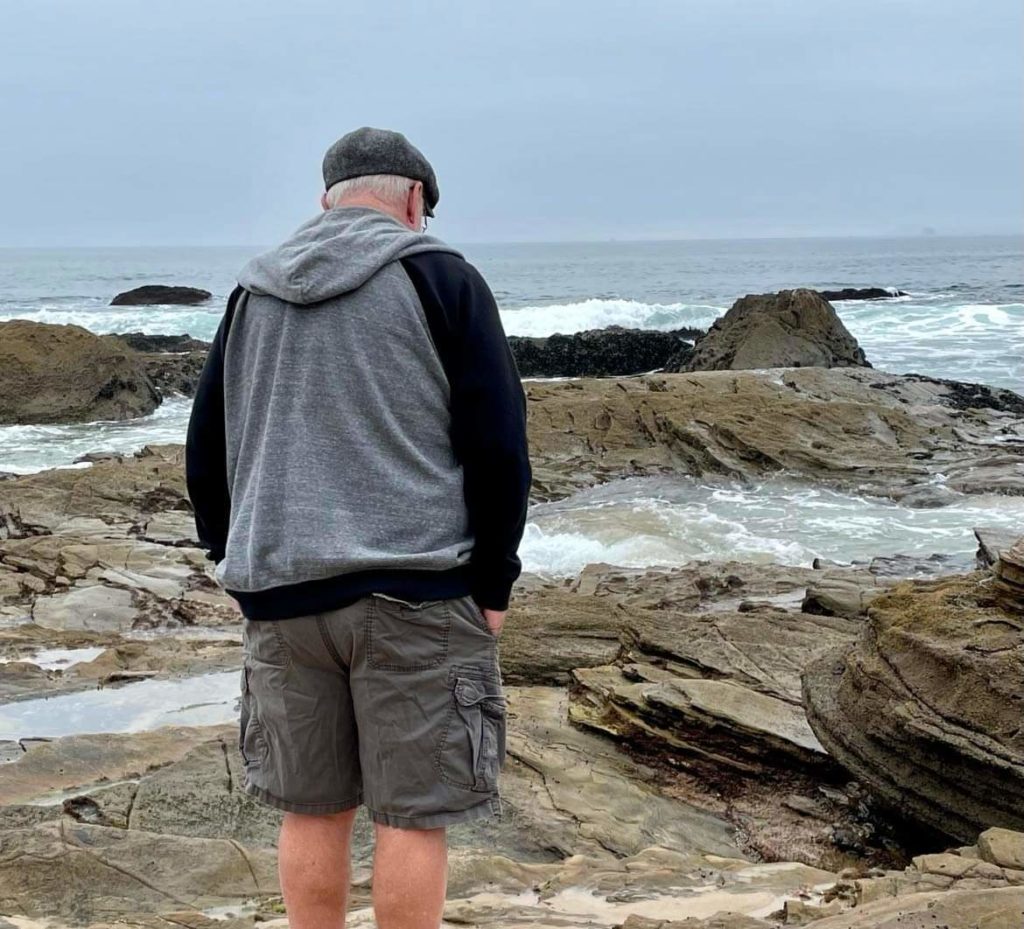
So the interest behind our most recent trip to Crystal Cove was enhanced by a visit to the rocky Pacific shoreline of the state park. I wanted to see first hand some of the things I learned from Steinbeck’s book. More importantly, I wanted to see what damage, if any, the recent oil spill that had been in the news had done to those tidepools. It had struck me as ironic that those creatures had found a way to survive the harsh realities of tidal life, only to be undone by a man-made disaster. Sort of like humans facing man-made climate change.
Well, I’m happy to report that all the anemones, urchins, hermit crabs, mussels and snails, etc. came through the spill safely, thanks to the combined efforts of man and nature to keep the spill from coming ashore. Current posted warnings are about not picking up tar balls that evidently are still rolling in weeks after the immediate crisis had passed, a persistent reminder of what can go wrong in an instant.
The urchin, however, is left thinking life as it knows it has come to an apocalyptic end. No food, no water, no oxygen; its world obliterated with no means to evacuate.
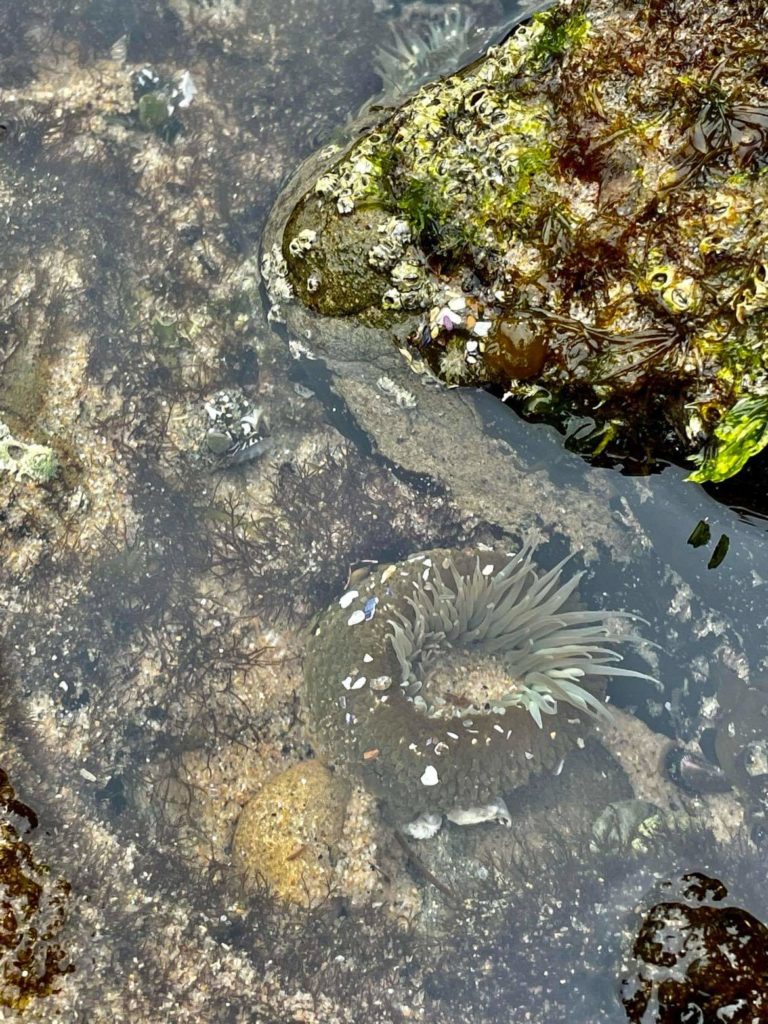
Meanwhile, it’s interesting and fun to watch these little creatures in all their nooks and crannies as life sloshes by. There’s two distinct ways of life in the tidepools. The species with mobility, like the hermit crabs, get jostled about by wave action as if they’re riding a bumpy subway car. The ones that anchor themselves to the rocks or the sand, like the urchins, are more or less massaged by the lapping waves. They can also just relax and wait for food to show up courtesy of those lapping waves. Life is like a spa for them. Meanwhile, the hermit crab has to eat while tumbling over like an acrobat every time a wave washes in or out.
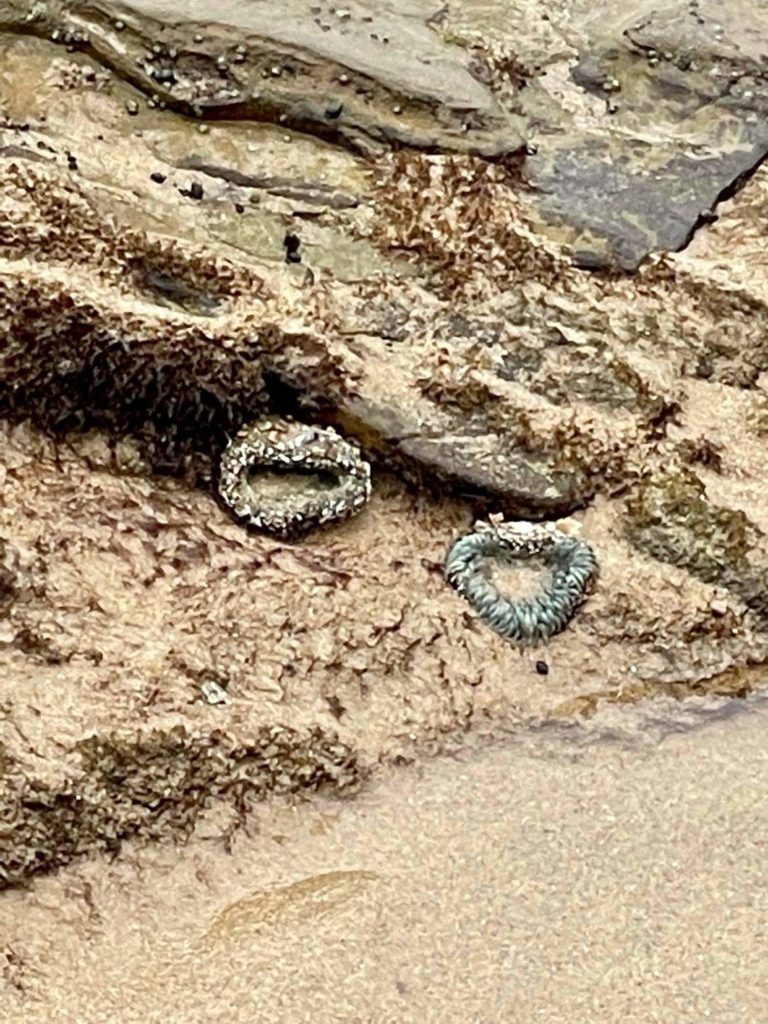
Of course, it all balances out at low tide. The hermit crab can eat in peace and is free to roam around hunting for its next meal, which is just stuck lying about with the tide out. The urchin, however, is left thinking life as it knows it has come to an apocalyptic end. No food, no water, no oxygen; its world obliterated with no means to evacuate. Then, a few hours later, the urchin feels like it died and went to heaven, while the hermit crab returns to the same old hustle and bustle grind.
From the big picture window in our cottage above, you can look down at those rock pools and quietly marvel at the undisturbed peace and serenity of the view.
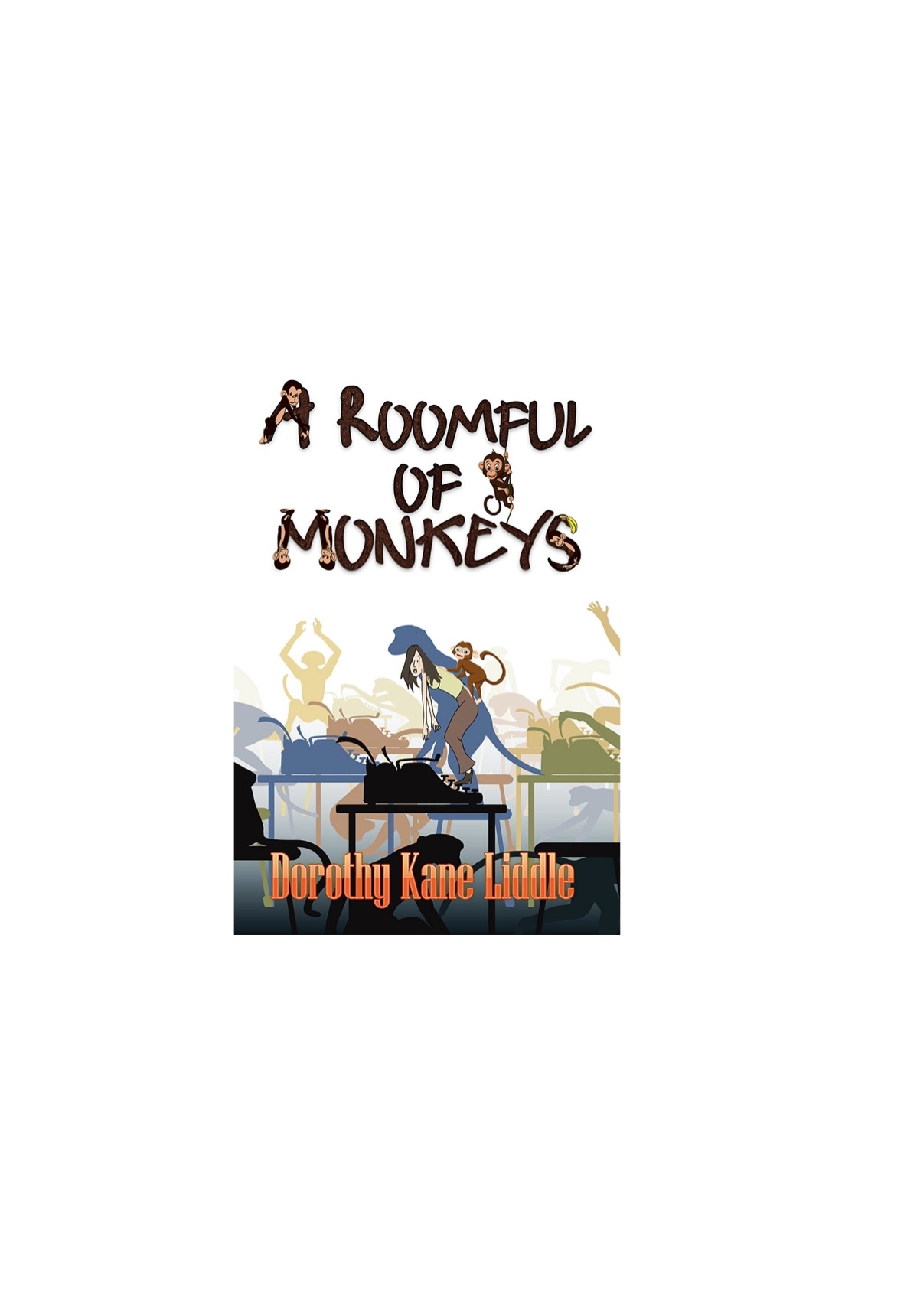

Be the first to comment